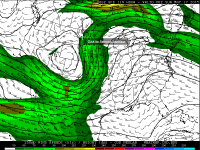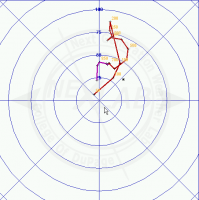Andrew Clope
EF1
I was wondering if this type of flow pattern aloft would cause issues with the hodographs, potentially contributing to a vbv profile? If not, what generally are the causes for a vbv profile?
It seems like the flow aloft this past weekend had a bit more of a southerly element. Good turning in the low levels, but then forced to back in the upper levels?
If you do have this type of flow aloft, rather than out of the SW, do you need your winds to back even more in the low levels to compensate?
Forecast hodo taken near Salina


It seems like the flow aloft this past weekend had a bit more of a southerly element. Good turning in the low levels, but then forced to back in the upper levels?
If you do have this type of flow aloft, rather than out of the SW, do you need your winds to back even more in the low levels to compensate?
Forecast hodo taken near Salina


Last edited:
